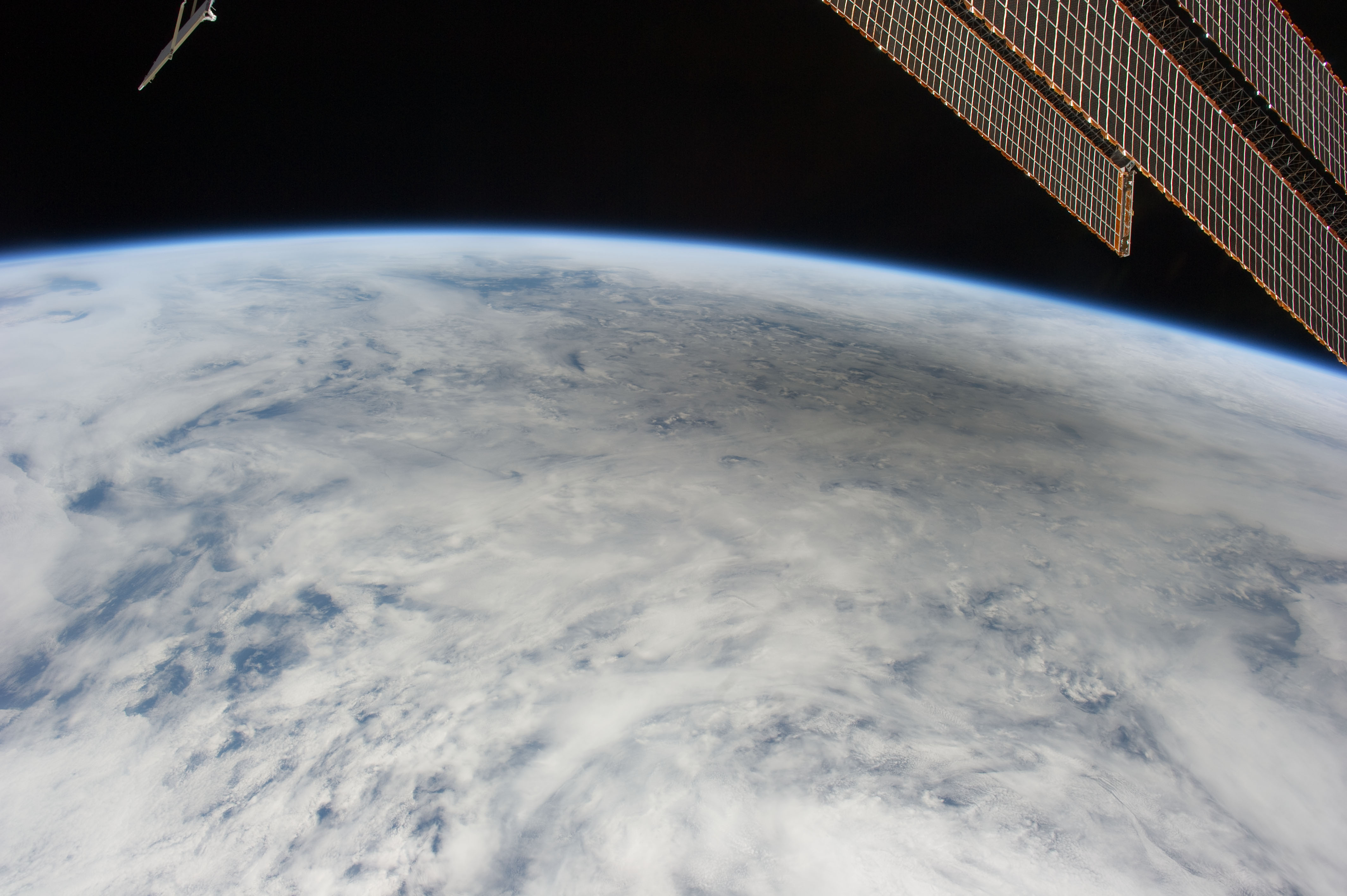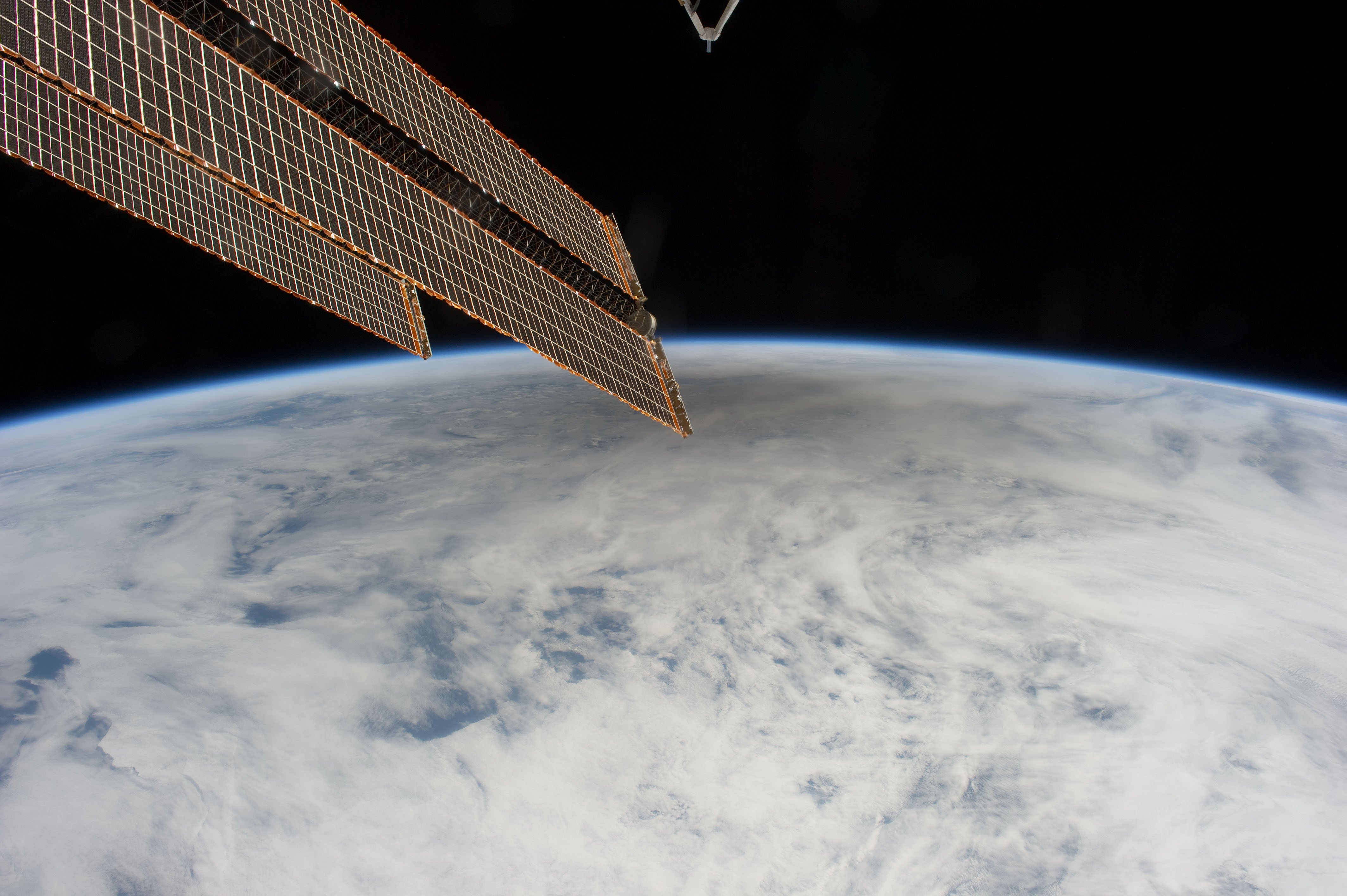Astronaut Photographs Solar Eclipse's Moon Shadow from Space

As millions of skywatchers gazed up at a dazzling solar eclipse on Sunday, one astronaut was amazed by looking down at the eclipse's shadow moving across the Earth.
NASA astronaut Don Pettit captured spectacular photos of the moon's shadow cast by an annular solar eclipse on Sunday (May 20). The images show a huge, black blemish on otherwise pristine white clouds over the Western Pacific Ocean.
"It is amazing to see an eclipse from orbit," Pettit told Mission Control while describing the event Monday. "The shadow on Earth looks just like what you see in the physics books and the astronomy book where those folks figured all that out without ever having seen what that shadow looks like."
NASA posted three of Pettit's photos of the annular solar eclipse shadow to his Expedition 31 mission's gallery, and the astronaut unveiled them online in his blog "Letters to Earth." Pettit used a 28-mm lens on a digital still camera to snap the photos at about 7:36 p.m. EDT (2336 GMT) on Sunday. [See Solar Eclipse Pictures from Space & Earth]
Sunday's solar eclipse was a rare celestial sight in which the moon lined up between the Earth and sun, but did not completely block out the star. Because the moon was at apogee, its farthest point from Earth in its orbit, it was too far from Earth to completely cover the sun's disk, leaving a dazzling "ring of fire" that amazed millions of skywatchers in the eclipse's path between southern China and Texas.
For Pettit and the rest of the space station crew, however, the most eye-popping site was the moon's shadow, which is split into two parts; the umbra, or darker central part, and the penumbra, the paler outer part of the lunar shadow.
Astronauts have seen solar eclipse shadows from space several times in the past from the International Space Station, as well as from other spacecraft like Russia's Mir space station.
Breaking space news, the latest updates on rocket launches, skywatching events and more!
On Sunday, the station astronauts were not the only ones with a view of the eclipse from space.
NASA's Terra satellite spotted an amazing view of the moon's shadow crossing the Pacific Ocean. Two other satellites —the European Proba-2 and Japan's Hinode solar observatory — captured spectacular video of the moon crossing the sun during the eclipse.
The next solar eclipse will be the total solar eclipse of Nov. 13. That eclipse, however, will only be visible from the South Pacific Ocean and parts of northern Australia.
You can follow SPACE.com Managing Editor Tariq Malik on Twitter @tariqjmalik. Follow SPACE.com for the latest in space science and exploration news on Twitter @Spacedotcom and on Facebook.

Tariq is the award-winning Editor-in-Chief of Space.com and joined the team in 2001. He covers human spaceflight, as well as skywatching and entertainment. He became Space.com's Editor-in-Chief in 2019. Before joining Space.com, Tariq was a staff reporter for The Los Angeles Times covering education and city beats in La Habra, Fullerton and Huntington Beach. He's a recipient of the 2022 Harry Kolcum Award for excellence in space reporting and the 2025 Space Pioneer Award from the National Space Society. He is an Eagle Scout and Space Camp alum with journalism degrees from the USC and NYU. You can find Tariq at Space.com and as the co-host to the This Week In Space podcast on the TWiT network. To see his latest project, you can follow Tariq on Twitter @tariqjmalik.

